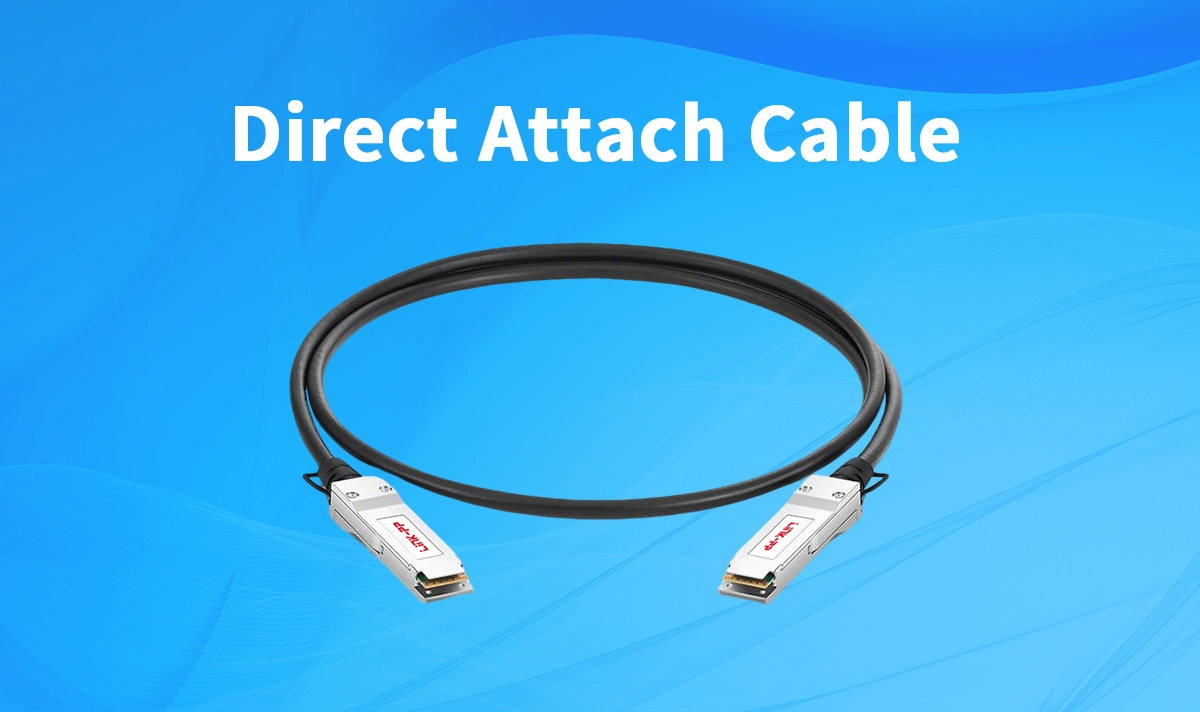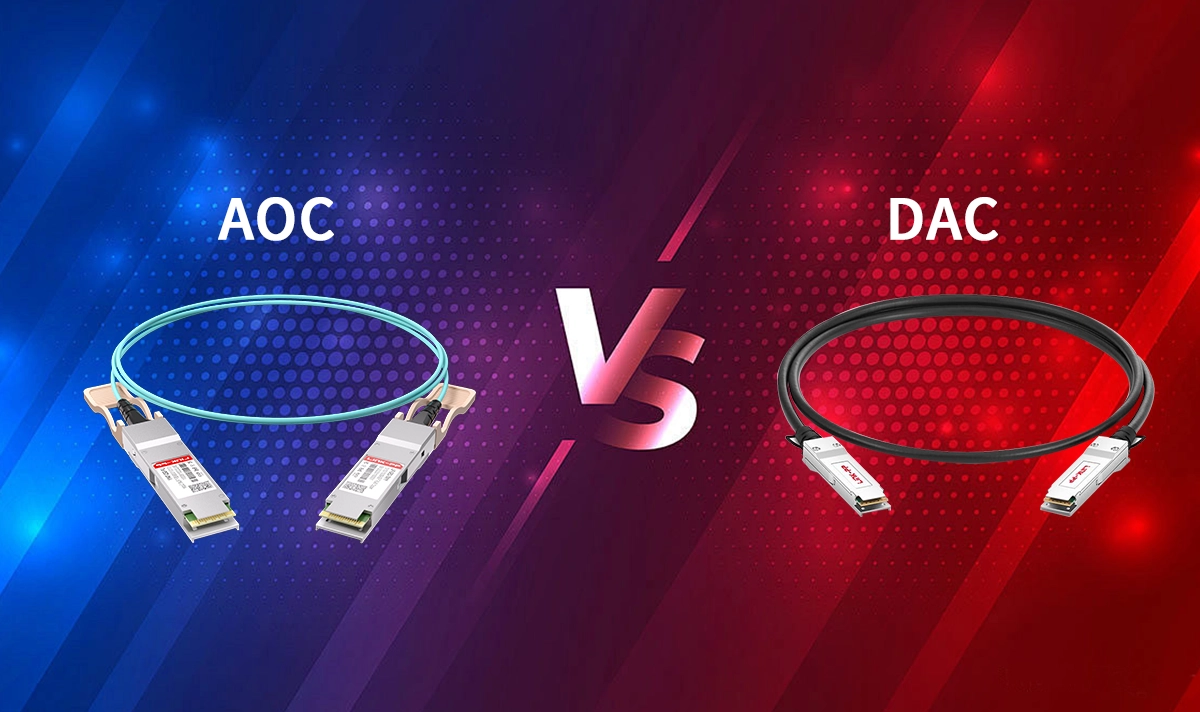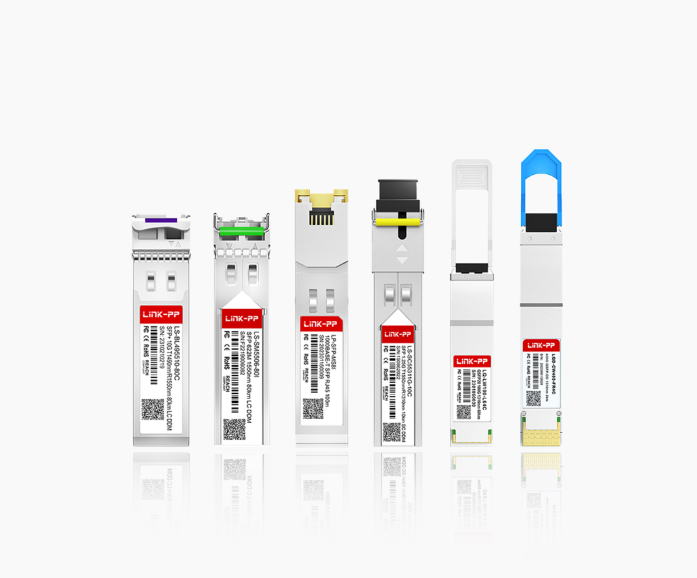
In the high-speed world of data centers and enterprise networking, efficiently connecting switches, servers, and storage is paramount. Enter the Direct Attach Cable (DAC) – a fundamental, cost-effective workhorse enabling blazing-fast connectivity over short distances. But what exactly is a DAC, and why is it often the preferred solution over fiber optics? This guide cuts through the jargon to explain DAC technology, its benefits, limitations, and optimal use cases, helping you make informed cabling decisions.
◉ Key Takeaways
Direct attach cables (DAC) link devices in data centers fast and at a low cost. They use copper wire for short distances and do not need extra parts.
Passive DAC cables use less power and are cheaper. They work well for up to 7 meters. Active DAC cables make signals stronger for longer runs up to 15 meters.
Breakout DAC cables turn one fast port into many slower ones. This helps data centers connect lots of devices easily.
DAC cables use less energy and make less heat than fiber or optical cables. This makes them great for crowded places with short distances.
Always check the cable length, speed, connector type, and if it works with your device before you buy. This helps you get the best fit and performance.
◉ What is a Direct Attach Cable (DAC)? Demystifying the Workhorse of Data Centers
A Direct Attach Cable (DAC) is a fixed-length, factory-terminated cable assembly used to connect network equipment within very short distances, typically within the same rack or between adjacent racks. Unlike traditional setups involving separate optical transceivers and fiber optic patch cables, a DAC integrates the connectors and cable into a single unit. These connectors are typically designed to plug directly into standard ports like SFP+, SFP28, QSFP+, QSFP28, QSFP-DD, or OSFP on switches, routers, servers, and storage devices.
◉ How DACs Work: Passive vs. Active
The core principle of a DAC is leveraging copper twinaxial (twinax) cable for short-reach electrical signaling. This eliminates the need for electro-optical conversion, which is inherent when using optical transceivers and fiber. DACs come in two primary flavors:
Passive DACs: These are essentially "dumb" cables. They contain no active electronic components for signal processing or amplification. They rely solely on the electrical signal strength generated by the port on the sending device and the signal sensitivity of the port on the receiving device. As a result:
Pros: Lowest power consumption, lowest cost, lowest latency.
Cons: Limited reach (typically 1m to 3m for 10G/25G, up to 5m for 40G/100G depending on standards and quality), susceptible to electromagnetic interference (EMI) over longer runs.
Active DACs (Active Copper Cables - ACCs): These incorporate active electronic components (typically small amplifiers or re-timers) embedded within the cable connectors. These components boost and reshape the electrical signal to overcome attenuation and distortion.
Pros: Extended reach compared to passive (typically up to 5m for 10G/25G, 7m for 40G, 5-7m for 100G, and potentially 3m for 200G/400G), better signal integrity over distance, reduced susceptibility to EMI/crosstalk.
Cons: Higher cost than passive DACs, slightly higher power consumption (though still much lower than optical modules), marginally higher latency (nanoseconds).
◉ DACs vs. AOCs: Choosing the Right Tool

DACs are often compared to Active Optical Cables (AOC cables). Understanding the distinction is crucial:
DACs: Use electrical signaling over copper twinax. Best for very short distances (< 7m). Lower power, lower cost, lowest latency. Dominant inside racks.
AOCs: Use optical signaling over integrated fiber. Contain embedded optical transceivers at each end within the cable assembly. Best for medium distances (typically 1m up to 100m+). Immune to EMI, lighter weight, thinner cable. Higher cost and power than DACs.
Table 1: DAC vs. AOC Key Comparison
Feature | Direct Attach Cable (DAC) | Active Optical Cable (AOC) |
|---|---|---|
Core Medium | Copper Twinaxial (Twinax) | Fiber Optic (Multimode) |
Signaling | Electrical | Optical (Conversion at ends) |
Max Reach | Short (Typically 1-7m) | Medium/Long (Typically 1-100m+) |
EMI Immunity | Low (Susceptible) | High (Immune) |
Power Use | Very Low (Passive) / Low (Active) | Moderate |
Cost | $$ (Lowest - Passive) / $$$ (Active) | $$$$ (Higher) |
Latency | Lowest | Low (Slightly higher than DAC) |
Weight/Size | Heavier, Thicker | Lighter, Thinner |
Primary Use | Within Rack / Adjacent Racks | Between Racks / Longer In-Rack Runs |
Key Advantages of Using DAC Cables
Cost Efficiency: Eliminating separate optical transceivers (like SFP+, QSFP28 modules) significantly reduces the per-port cost, especially critical in large-scale deployments.
Lower Power Consumption: Particularly passive DACs consume minimal power, contributing to reduced operational expenses (OpEx) and cooling requirements. Active DACs still use less power than optical solutions.
Ultra-Low Latency: The direct electrical path offers the absolute lowest latency connectivity, vital for high-frequency trading, HPC, and real-time applications.
Simplicity & Reliability: Factory-terminated means no field polishing or cleaning required. Fewer points of failure compared to transceiver + fiber setups. Plug-and-play simplicity.
High Performance: Support the latest high-speed standards (10G, 25G, 40G, 100G, 200G, 400G) with excellent signal integrity within their designed reach.
Reduced Spares Inventory: Simpler to manage spares compared to multiple types of transceivers and fiber cables.
Disadvantages and Limitations
Limited Reach: Strictly confined to short distances (usually < 7m). Not suitable for connections beyond the rack row.
EMI Susceptibility: Copper cables can be affected by electromagnetic interference, especially in dense, high-power environments. Careful cable management is essential.
Weight and Bulk: Heavier and bulkier than fiber optic cables, potentially impacting airflow and making management in dense racks slightly more challenging.
Bend Radius: Copper twinax has a larger minimum bend radius than fiber, requiring more careful handling to avoid damage.
◉ Choosing the Right DAC: Key Considerations
Selecting the optimal DAC cable involves several factors:
Speed & Protocol: Match the DAC to your port speed (e.g., 10G SFP+, 25G SFP28, 40G QSFP+, 100G QSFP28, 200G QSFP56, 400G QSFP-DD/OSFP) and protocol (Ethernet, InfiniBand, Fibre Channel).
Required Length: Choose the shortest length that meets your needs. Passive for 1-3m, Active for 3-7m. Don't use a 5m DAC if 1m suffices.
Passive vs. Active: Decide based on length and signal integrity requirements within that length. Passive for ultra-low latency/cost at very short reach; Active for pushing the distance limits with better signal quality.
Compatibility: Ensure vendor compatibility. While standards-based DACs often work across brands, some platforms may require vendor-coded or "unlocked" DACs. Reputable brands like LINK-PP rigorously test for broad compatibility.
Quality & Reliability: Opt for cables from reputable manufacturers using high-quality components and robust construction. Poor quality DACs can cause signal errors and link instability. LINK-PP DACs are known for meeting stringent quality standards.
Form Factor: Match the connector type to your equipment ports (SFP+, QSFP+, etc.). Breakout DACs (e.g., QSFP+ to 4x SFP+) are also available for specific connectivity needs.
◉ LINK-PP DAC Solutions: Performance You Can Trust

For demanding data center and enterprise environments, LINK-PP offers a comprehensive range of high-quality, reliable DAC cables engineered for optimal performance and broad compatibility. Key product examples include:
LINK-PP LS-DAC1110-5MN: High-quality 10G SFP+ Passive DAC, 5m length. Ideal for cost-effective 10G server-to-switch links.
LINK-PP LS-DAC1125-3MN: Robust 100G QSFP28 Passive DAC, 3m length. Perfect for high-density 100G top-of-rack switching.
LINK-PP LQ-DAC1140-1MN: 40G QSFP+ Active DAC, 1m length. Provides reliable, extended reach 40G connectivity.
These LINK-PP DAC [Request samples] solutions exemplify the commitment to delivering the performance, reliability, and value required in modern high-speed networks.
◉ Optimize Your Data Center Connectivity with DACs
Direct Attach Cables remain an indispensable solution for high-speed, low-latency, and cost-effective connectivity within the modern data center rack. By understanding the differences between passive and active DACs, their advantages over AOCs and traditional optical transceiver + fiber setups, and the key selection criteria, you can make informed decisions that optimize performance, cost, and power efficiency for your critical infrastructure.
Ready to simplify your high-speed connections and reduce costs?
Explore the full range of high-performance, compatible LINK-PP Direct Attach Cables today. Contact our experts to find the perfect DAC solution for your specific switch, server, and distance requirements. Let LINK-PP help you build a faster, leaner, more efficient network backbone.
◉ FAQ: Direct Attach Cables (DACs)
Q: What is the maximum distance for a DAC cable?
A: Maximum reach depends heavily on the data rate (10G, 25G, 40G, 100G, etc.) and whether the DAC is passive or active. Generally:
Passive DACs: ~1-3m (10G/25G), 3-5m (40G/100G).
Active DACs: ~5-7m (10G/25G/40G), 5-7m (100G), ~3m (200G/400G). Always consult the specific cable's datasheet.
Q: DAC vs Ethernet Cable - What's the difference?
A: Standard Ethernet cables (Cat6/Cat6a/Cat7) use RJ45 connectors and carry Ethernet protocols over twisted-pair copper. DACs use SFP+/QSFP+ etc. connectors, carry high-speed serial protocols (like Ethernet, but also InfiniBand, FC), and use twinax copper designed for much higher data rates (10G+) over very short distances within racks. They are not interchangeable.
Q: Is a DAC better than using an optical transceiver and fiber?
A: "Better" depends on the use case. DACs are superior for short distances (<5-7m) due to lower cost, lower power, and lower latency. Optical transceivers and fiber are superior for distances beyond ~7m, where EMI immunity is critical, or where lighter/thinner cables are needed. Optical solutions are essential for long-haul.
Q: Can I use any brand DAC with my Cisco/Juniper/Aruba etc. switch?
A: While standards exist, compatibility can vary. Many third-party DACs (like those from LINK-PP) are designed for multi-vendor compatibility and often work without issue. However, some OEM equipment might require vendor-specific coding on the DAC's EEPROM. Using "unlocked" or specifically coded DACs from a reputable supplier like LINK-PP ensures compatibility.
Q: Do DAC cables require special configuration?
A: Generally, no. DACs are plug-and-play. The connected ports auto-negotiate speed and link parameters just like they would with a compatible optical transceiver. Ensure the DAC speed matches the port capability.What is a breakout DAC cable?




